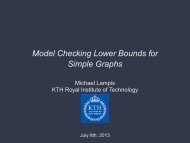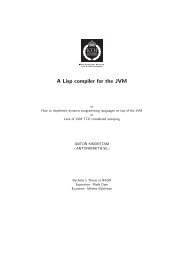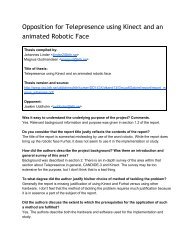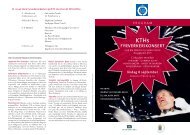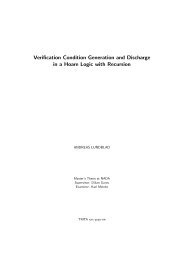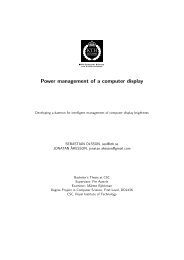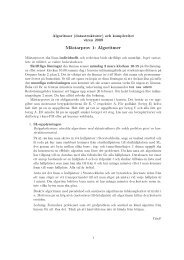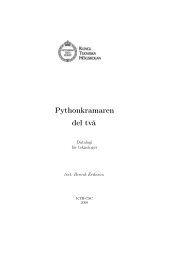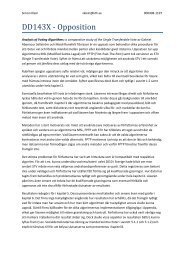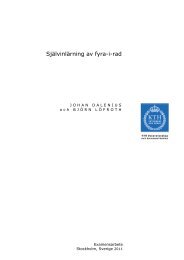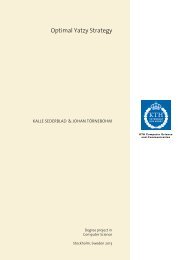Evaluation of Automatic Text Summarization - KTH
Evaluation of Automatic Text Summarization - KTH
Evaluation of Automatic Text Summarization - KTH
You also want an ePaper? Increase the reach of your titles
YUMPU automatically turns print PDFs into web optimized ePapers that Google loves.
8 CHAPTER 1. SUMMARIES AND THE PROCESS OF SUMMARIZATION<br />
1.3.1 Intrinsic <strong>Evaluation</strong><br />
Intrinsic evaluation measures the system in <strong>of</strong> itself. This is <strong>of</strong>ten done by comparison<br />
to some gold standard, which can be made by a reference summarization<br />
system or, more <strong>of</strong>ten than not, is man-made using informants. Intrinsic evaluation<br />
has mainly focused on the coherence and informativeness <strong>of</strong> summaries.<br />
1.3.1.1 Summary Coherence<br />
Summaries generated through extraction-based methods (cut-and-paste operations<br />
on phrase, sentence or paragraph level) sometimes suffer from parts <strong>of</strong> the summary<br />
being extracted out <strong>of</strong> context, resulting in coherence problem (e.g. dangling<br />
anaphors or gaps in the rhetorical structure <strong>of</strong> the summary). One way to measure<br />
this is to let subjects rank or grade summary sentences for coherence and then compare<br />
the grades for the summary sentences with the scores for reference summaries,<br />
with the scores for the source sentences, or for that matter with the scores for other<br />
summarization systems.<br />
1.3.1.2 Summary Informativeness<br />
One way to measure the informativeness <strong>of</strong> the generated summary is to compare<br />
the generated summary with the text being summarized in an effort to assess<br />
how much information from the source is preserved in the condensation. Another<br />
is to compare the generated summary with a reference summary, measuring how<br />
much information in the reference summary is present in the generated summary.<br />
For single documents traditional precision and recall figures can be used to assess<br />
performance as well as utility figures (section 1.3.1.5) and content based methods<br />
(section 1.3.1.6).<br />
1.3.1.3 Sentence Precision and Recall<br />
Sentence recall measures how many <strong>of</strong> the sentences in the reference summary that<br />
are present in the generated summary and in a similar manner precision 4 can be<br />
calculated. Precision and recall are standard measures for Information Retrieval<br />
and are <strong>of</strong>ten combined in a so-called F-score (Van Rijsbergen 1979). The main<br />
problems with these measures for text summarization is that they are not capable<br />
<strong>of</strong> distinguishing between many possible, but equally good, summaries and that<br />
summaries that differ quite a lot content wise may get very similar scores.<br />
1.3.1.4 Sentence Rank<br />
Sentence rank is a more fine-grained approach than precision and recall (P&R),<br />
where the reference summary is constructed by ranking the sentences in the source<br />
4 Precision is in this case defined as the number <strong>of</strong> sentences in the generated summary that<br />
are present in the reference summary.



